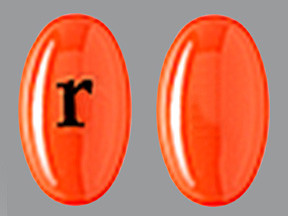DOXERCALCIFEROL - ORAL
PHONETIC PRONUNCIATION: (dox-er-kal-SIF-e-role)
COMMON BRAND NAME(S): Hectorol
GENERIC NAME(S): doxercalciferol
Uses
USES: This medication is used to treat people with serious kidney disease who have high levels of a certain natural substance (parathyroid hormone-PTH), which your body normally makes. High PTH levels affect the balance of other minerals in your body (calcium and phosphorus) and may result in weak bones. Doxercalciferol is a man-made form of vitamin D. It works by decreasing PTH levels and increasing calcium/phosphorus levels in the body.
How to use DOXERCALCIFEROL - ORAL
HOW TO USE: Take this medication by mouth with or without food, usually 3 times a week on dialysis days (e.g., Monday, Wednesday, Friday) or as directed by your doctor. Dosage is based on your medical condition and response to treatment. Your doctor may adjust your dose or temporarily stop this drug based on laboratory test results (PTH levels). Do not increase your dose, take it more frequently, or stop taking this medication without your doctor's approval. It is very important to follow the diet recommended by your doctor to get the most benefit from this medication and to prevent serious side effects. Do not take more than 2 grams of calcium a day while you are taking this medication. Sources of calcium include your diet, phosphate binders, or calcium supplements. If you have any questions about how much calcium you take in a day, ask your doctor or pharmacist. Do not take other supplements/vitamins (such as vitamin D) unless otherwise directed by your doctor. (See also Drug Interactions section.) Use this medication regularly to get the most benefit from it. To help you remember, take it at the same time each day that you have a prescribed dose.
Side Effects
Precautions
Interactions
Overdose
Images
Reviews
Faq for DOXERCALCIFEROL - ORAL
Doxercalciferol is an oral medication that belongs to a class of drugs known as vitamin D analogs. It is used to treat conditions associated with low levels of parathyroid hormone, such as kidney disease or hypoparathyroidism.
Doxercalciferol is usually taken by mouth as directed by your doctor. It is typically taken once a day with or without food. Follow the dosage instructions carefully and do not exceed the prescribed amount.
Common side effects of Doxercalciferol may include headache, nausea, vomiting, constipation, weakness, or muscle pain. Contact your doctor if these side effects persist or worsen. In rare cases, allergic reactions or high levels of calcium in the blood may occur. Seek immediate medical attention if you experience severe dizziness, trouble breathing, or swelling of the face, tongue, or throat.
You should inform your doctor about any kidney problems you may have before taking Doxercalciferol. Dose adjustments may be necessary to avoid complications.
Doxercalciferol may interact with other medications, including certain antacids, calcium supplements, certain diuretics, or digoxin. Inform your doctor about all the medications you are taking to avoid any potential interactions.
If you miss a dose of Doxercalciferol, take it as soon as you remember. However, if it is close to the time for your next dose, skip the missed dose and resume your regular dosing schedule. Do not double the dose to catch up.
It is important to discuss the potential risks and benefits of using Doxercalciferol during pregnancy or while breastfeeding with your healthcare provider. They will consider your specific situation and make the best recommendation for you.
Disclaimer
IMPORTANT: HOW TO USE THIS INFORMATION: This is a summary and does NOT have all possible information about this product. This information does not assure that this product is safe, effective, or appropriate for you. This information is not individual medical advice and does not substitute for the advice of your health care professional. Always ask your health care professional for complete information about this product and your specific health needs.

No Reviews Yet